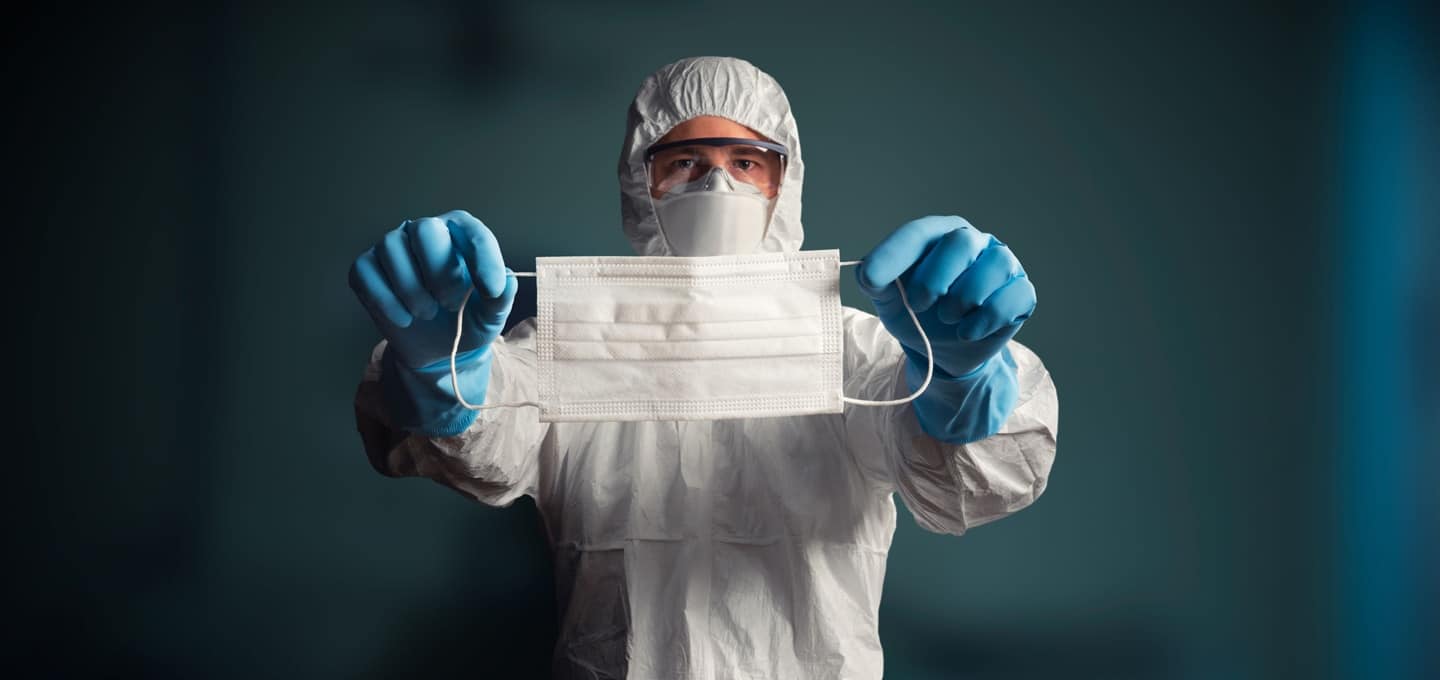For this reason, the German Government has formulated concrete requirements for a nationwide occupational safety and health standard. Here, two principles apply:
- Irrespective of the company’s safety measures, if there is doubt that the minimum distance between employees can be safely maintained at all times, everyone should cover their mouth and nose t.
- People suffering from respiratory symptoms or fever should generally not be on the company premises unless the doctor has determined the cause.
The employer is obliged to define a procedure for clarifying suspected cases. Exceptions may apply to companies and employees in critical infrastructures.
The Responsibility Lies with the Employer
It is the employer who is responsible for implementing the necessary infection control measures.
During work, a safety distance of at least 1.5 meters must always be maintained – both inside buildings and outside on the company premises or in vehicles. For this purpose, markings must be placed or access regulations need to be applied. If this is not possible, efficient alternatives must be provided.
Through simple organizational measures, contact between employees needs to be kept as low as possible. Shift changes, breaks or time spent in the office should be rearranged by organizational planning.
If contact cannot be prevented, e.g. through separation by a glass pane, additional protective measures must be taken. For this purpose, the employer must provide protective masks covering mouth and nose.
In Case of Symptoms: Stay at Home!
If symptoms such as slight fever, signs of a cold or respiratory distress occur, employees must leave the workplace immediately or stay at home. This applies until the cause has been determined by a doctor. The aim is to avoid exposing employees to any risk.
The employer should make provisions for washing facilities or disinfectant dispensers at entrances and exits so that the necessary hand hygiene can be maintained. Moreover, short cleaning intervals should apply to all premises, company vehicles, etc. When coughing and sneezing, the familiar etiquette should be observed.
Protecting Employees with Pre-Existing Conditions
For employees with pre-existing conditions, the required individual precautionary measures have to be observed. Preventive medical check-ups by the company doctor can be used.
Additionally, employers need to work together closely with the local health authorities to be able to react quickly and effectively to infections and, if necessary, to isolate infected persons. Employees with a suspected infection should be able to turn to a permanent contact person within the company.
It is the employer’s duty to explain and clarify all measures in an understandable way. The safety and health of all employees needs to be given the highest priority.








